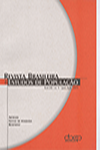Application of spatial exploratory analysis in identifying territorial configurations
Keywords:
Exploratory spatial analysis, Spatial self-correlation, Regional urban arrangementsAbstract
Exploratory analysis of spatial data, carried out to identify different regional urban arrangements between Brazilian municipalities, proved to be useful for studies on various areas of observation. This makes it possible to arrive at important findings related to territorial dynamics and patterns of spatial correlations between municipalities. This analysis, associated with information on centrality (networks of cities), connectivity (general street and highway systems) and density of pendular movements of the population, showed groupings that extend beyond the large urban agglomerations found in earlier studies. These newer types of groupings correspond to morphologies that transcend traditional agglomerations defined by continuous urban sprawls that involve more than one municipality. They consist of spatial categories that are even more complex from the point of view of demographic, economic and functional concentrations and in terms of the density of human displacements. This article brings up the discussion of the use of this analysis technique, together with its possibilities and limitations.Downloads
Downloads
Published
How to Cite
Issue
Section
License
Papers published in Rebep are original and protected under the Creative Commons attribution-type license (CC-BY). This license allows you to reuse publications in whole or in part for any purpose, free of charge, even for commercial purposes. Any person or institution can copy, distribute or reuse the content, as long as the author and the original source are properly mentioned.

